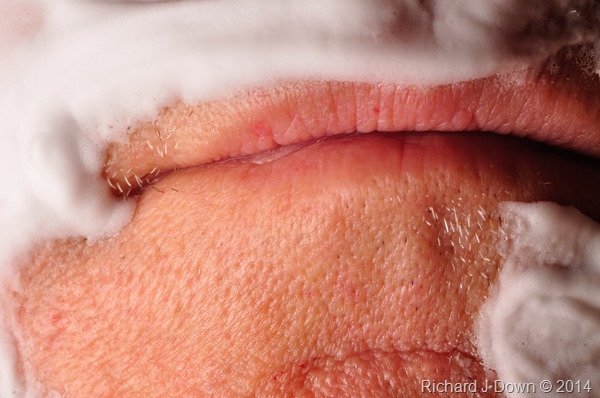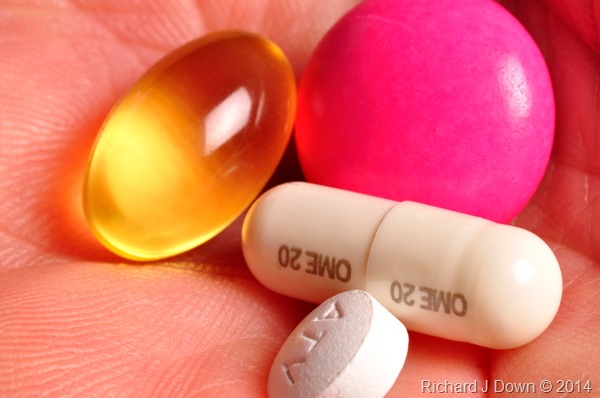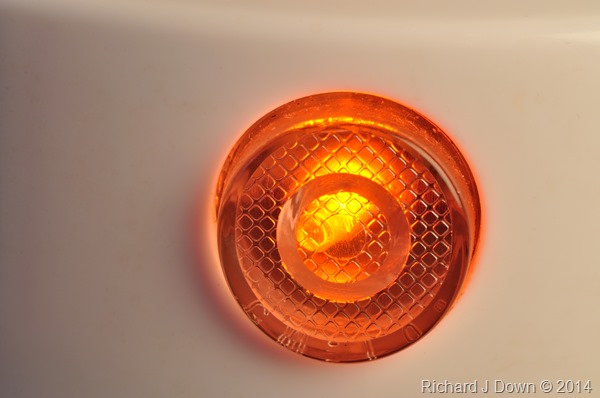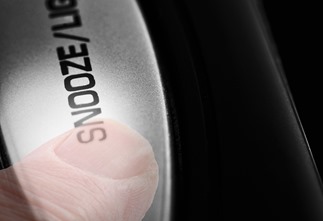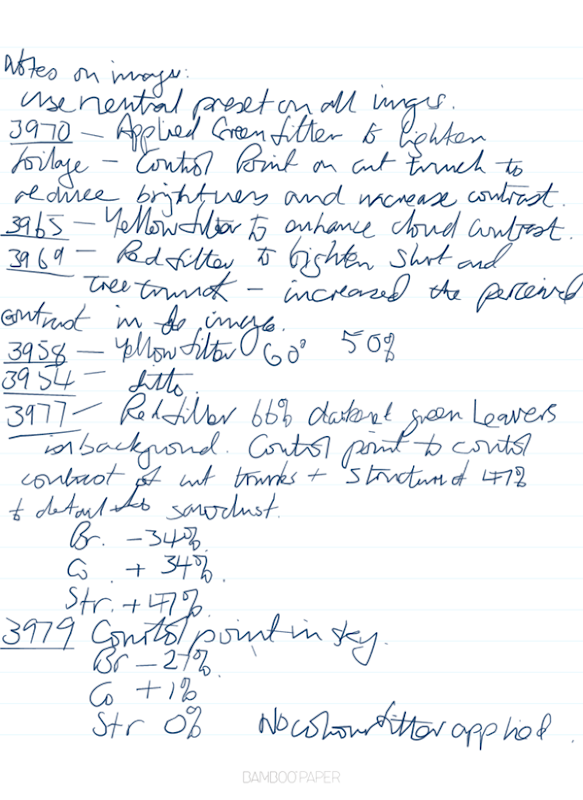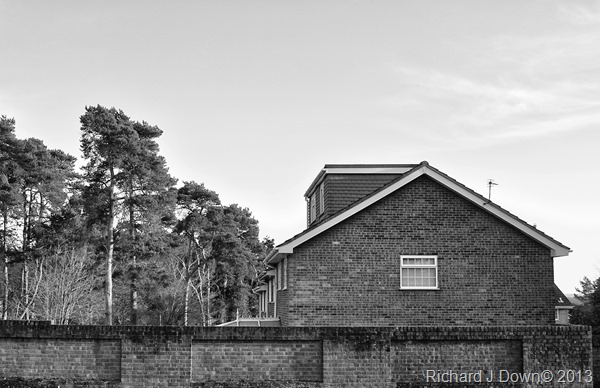OCA DPP Assignments
Sunday 6 April 2014
Assignment five–Tutor feedback and reflection
I have included an extract of the main points that Sharon made about this assignment and highlighted the areas where I will need to take action before submitting for assessment:
I particularly enjoyed the abstract nature of many of these pictures. I got a sense of your morning routine but had to take some time to work it out. It added to the project not to be given all the information out right and as a result really pulled me into the work. It was also a good decision not to title the work in a descriptive way so you still kept the mystery. I’m also glad you went with this project and not the actor set, which looks like a good exercise but this work takes me on much more of a journey. The journey and intentions of this project were clear before I even read your blog so that alone suggests you achieved it well. I also thought that the ambiguity provided by the use of macro photography helped this project from being a clichéd way to attempt this task. I would like to see your writing move away from more technical detail such as the tablet package providing good texture and detail to incorporating a more reflective account of what it means for you to get ready. In an extreme and shocking example you may be interested in Pete Mansell’s series for his level 3 Advanced. This kind of approach would help you to work with your creative ideas more and would help assessors know how you thought it through rather than seeing it as a simply technical exercise – which I am sure it is not. Some more information would be helpful here. I like the theme of touch and this does come through but again, in your writing and in your final editing process, ensure this hits the assessors between the eyes! The awareness you have about the retirement theme is very interesting and perhaps this is something you could look at in your next courses (landscape or documentary would both fit it well). I wish you all the best in exploring this if you choose to do so. (I think it would be great!) Technically these were well produced and printed. You demonstrated some very competent skills in applying lighting to the reading of an image. The only ones that looked over produced was the shaving one and the pills held in a hand, which could do with a reprint. Perhaps you could put them in a portfolio box for assessment? I’m glad you made the decision against manipulation, it wasn’t needed and I think the work is stronger as a result. I wonder if there are too many pills references. If I was you I would edit it down to one picture to represent this aspect of your routine. The pills in your hand is probably the most obvious and also badly coloured so I would consider editing this one out. The blue and white Braille image I feel is the most successful of these as it is the least obvious and most visually grabbing. Thinking along these lines I wonder whether the shaving face is required? Something for you to consider in the final edit. In my opinion it would be a good editing decision to make the selection visually striking and ambiguous. This would help the series sit well together both visually and conceptually. I think it is nearly there and with a few tweaks and removals it will be a tighter and more coherent set.
I will make the modifications to my initial blog submission by editing the descriptions using italics and reposting the blog with an explanation of what I have changed in response to tutor feedback.
Following Sharon’s suggestion, I looked and Peter Mansell’s blog. It was indeed an extreme example but I’m glad I spent the time. I got an insight into the difficulties experienced by his particular mobility problems but more importantly into the hidden and very personal issues he has to deal with on a daily basis. Issues that someone who enjoys good health (and takes it for granted most of the time) is not aware of.
Wednesday 19 February 2014
Assignment five: Personal Project
Editing in response to tutor feedback. In response to my tutor’s comments (shown above), I have left my original explanations and captions in place and supplemented them with additional text in Italics, in particular how each step in my routine has come to mean something, simply by examining it in detail. The numbers shown on my prints have not been changed. Prints 5 and 8 have been omitted.
Introduction
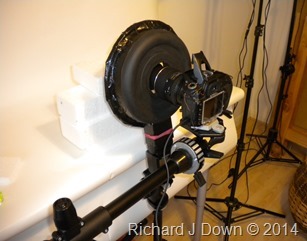 | 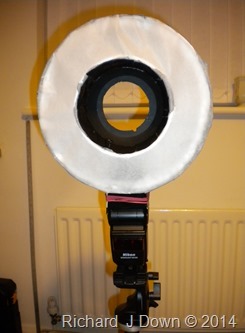 |
Image 1
This represents the start of the series and of my day. Do I snooze or get up? Since retiring I have experimented with trying to wake without an alarm and on days when I have little planned, I have indulged. However, I find that I still need structure to my day which starts with a regular rising time.
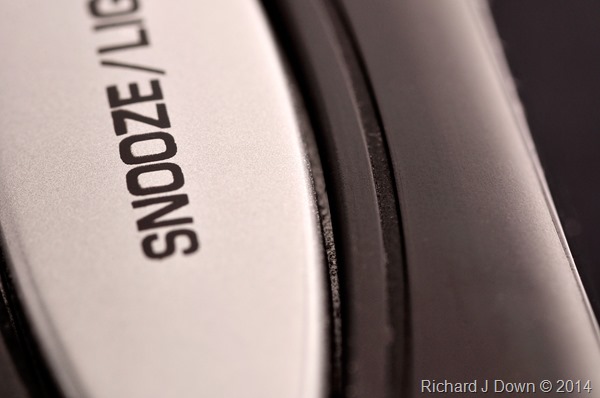
Image 2
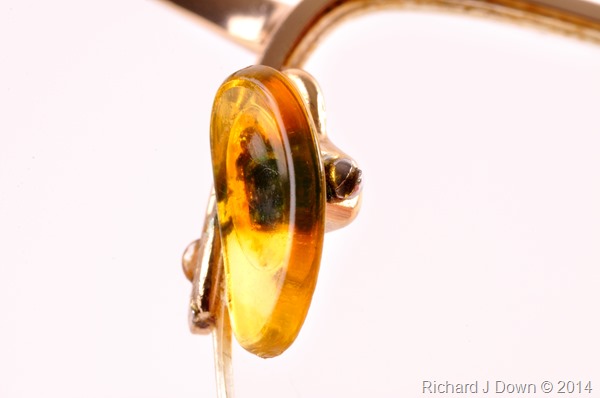
Image 3

Image 4
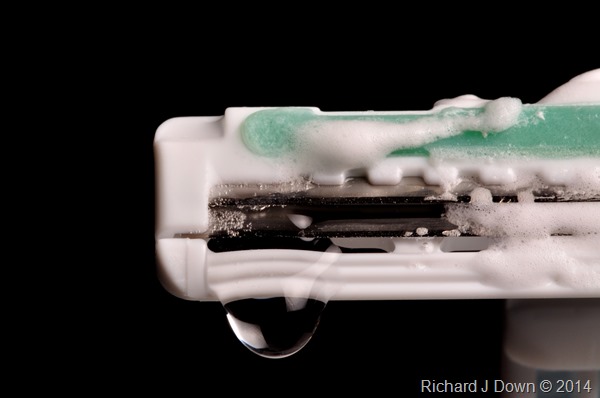
Image 5
Image 6
The next part of my routine involves taking my daily preventative medication, the braille on this tablet box was an ideal subject.
This is another device that we constantly look at but rarely see. Enigmatic for the sighted but a lifeline to the visually impaired. As this series is about touch and texture, I started thinking about the slow deterioration of eyesight over the years and my need for glasses. Hopefully I shall never need Braille. 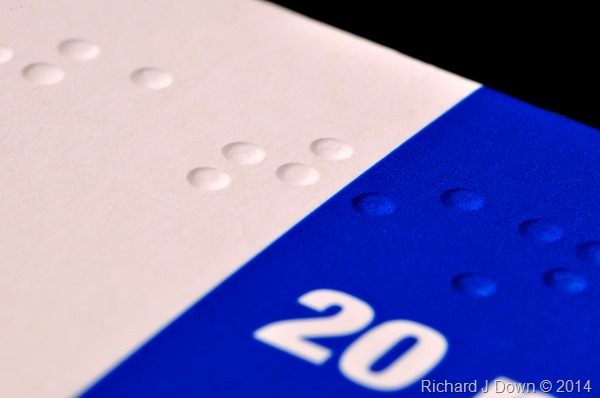
Image 7
The diary pack of tablets yielded some interesting text and textures.
My tutor thought that I should remove this image from the series as it was another image of my medication. Again, it is a tactile experience squeezing the pill through the foil but as the last image was about touch and vision, this was included because it is about touch and memory. A useful reminder of the day of the week when every day can seem the same without the total change of routine the weekends bring.
Image 8
Image 9
This image of the bead of water that is left by your top lip when you sip from a glass, was best photographed against a black background with just one light. I did try to use a white backdrop but the image was not as graphic.
With this image I wanted to show the after effect of the touch of my lips on the rim of a glass and the temporary nature of the film of water that forms there. The substantial amount of water that our bodies contain, will continue to exist long after we have gone, constantly being recycled and forever moving.
Image 10
I find this round button appealing. It has a soft touch and its warm glow promises something comforting. I know as soon as the light goes out, the promise will be kept with a hot cup of coffee.
Image 11
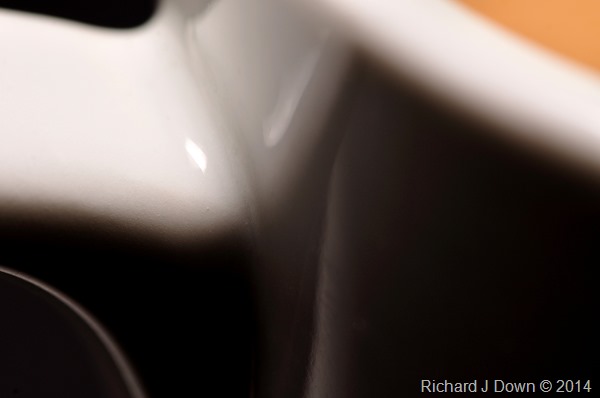
Image 12
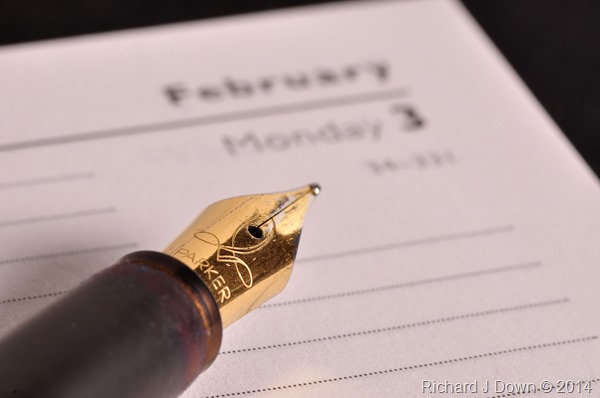
Reflection on the Project
 | 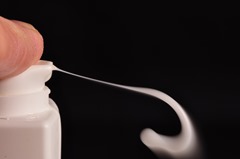 |
 |  |
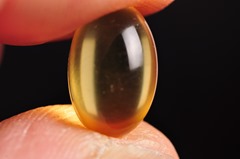 | 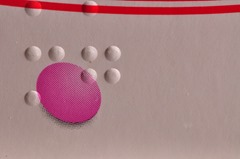 |
Tuesday 21 January 2014
Assignment 4 – Reflection on Tutor Feedback
Here are the tutor’s overall comments:
Thanks for completing assignment 4. I thought you showed a good level of creativity, with a subject that is current and also showed how you have got to grips with Photoshop. Well done. I think you could have deepened your level of research into real and fake in relation to photography both historically and today
…and Feedback on Assignment:
…..When I started to look closer I did enjoy your thought process and thought how you executed your vision was well done. Although I think it is too literal in approach I have to admire the way you made the image match your vision, as highlighted in your sketch. I also like the made up language and the general concept for the magazine, which demonstrates a good level of creativity. My only criticism is that when considering real / fake in relation to photography you don’t have to go to extremes of using manipulation and Photoshop in a dramatic and obvious way. You could use the software in a subtle way and therefore confuse the viewer with what appears to be real but is not. In fact this is at the heart of photography as truth and an issue that has been live since photography began. One of the first photographs was by a man who staged his own death!
http://en.wikipedia.org/wiki/Hippolyte_Bayard …….and other comments on context: Learning Logs or Blogs/Critical essays (Context) It’s great to see you continue to be engaged with your reading and OCATV visits. Taylor Wessing was a good idea and I enjoyed reading your points of view on the winners and others. These trips must not be underestimated in terms of importance to your studies. You also demonstrate a good level of Photoshop awareness when using it for touching up images and have made your position clear on how far you would go in changing images. In terms of making your blog easier to navigate may I recommend you put a label for your assignments so the assessors can easily link between your blog and your assignments. Suggested reading/viewing (Context) Looking at the work of other photographers and visual artists will open-up greater creative responses within your own practice. Dave did an excellent job with his research for this assignment – you might be interested. I really felt like he got beneath the areas of importance for the real/fake debate in digital or manipulated photography and what this assignment was based upon.
http://davebartlettdpp.wordpress.com/2013/11/28/assignment-4-real-or-fake/ Other artists you use manipulation: Wendy McMurdo Julia Fullerton Batten Conclusions / Pointers for the next assignment Make your final assignment something that really interests you!
Reflection My reflection on feedback was included in an email to my tutor:
I understand that there are more subtle ways of using manipulation, maybe I need practice at doing that. My image is an expression of the way I see the situation. Unfortunately, I have the “crash bang” approach to assignments. I get an idea I think will work, put my head down and pursue it. I’ll try to remember to pause occasionally and ask myself if I’m on the right track or if I could do it differently.
Assignment 5 is coming on slowly. As I mentioned I have registered DPP for assessment in March but it will be touch and go. I may have to push it onto the July event. At your suggestion I put my Assignments in a separate blog some time ago. The link is on the top right listed under ‘My OCA Blogs’ above my photograph. Where my blog refers to a particular assignment, I’ll add a hyperlink if I can’t add a label. For level 2, I shall be moving to Wordpress which I understand is more flexible.
I’ve looked at the links you included and found Dave’s research very useful. I have actually read most of the topics he included at one time or another but didn’t think to write and include a report to my blog – omission noted for future action. All part of the “re-learning the learning process”.
Talking of which, I was discussing the Level 2 options with Eddy at the weekend and he mentioned the amount of written work that is required for the courses. I achieved an ‘O’ level in English in 1965 and since then have not written a sizeable or serious essay. I am finding it increasingly difficult (i.e. it takes me a long time) to marshal the ideas I get from my research and reading into a coherent form. Are there any resources or techniques that you can recommend which may improve my skills?
Sunday 12 January 2014
Assignment four: Real or fake?
13/12/2013 I've had a few ideas about this one. Thinking of the globalisation of our High Streets and posing the question: Are the global brands squeezing the local colour out of your High Street? Notes: Use composite of shop fronts. 2 big brands either side of a local café distorted vertically converted to monochrome with colours running out over the pavement and down the drain. Look for shop fronts about the same scale - without parked cars. May have to add a clear piece of pavement and a SW drain. Photographs in pedestrian precincts ideal - search Google street view for locations near here. Farnham has both a Subway (The Borough) and Starbucks (Lion & Lamb) Alton has a Subway (High Street) Farnborough has very little but I did pick up the story of the unsuccessful campaign to save the former Tumbledown Dick pub from being turned into a McDonalds Drive through. Guildford High Street is the best venue, Starbucks, McDonalds and Jo Clark's café bar as the local colour How to make the colours look like flowing paint - research PS filters/plugins? Name of the magazine?............ Have your say - Ĉu via diru (Esperanto) Made up magazine – made up language! Here is a quick (bad) sketch of the idea in my head.
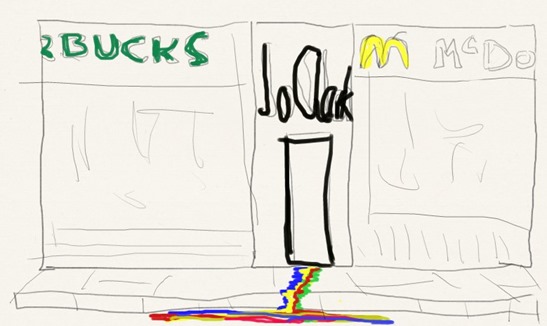
Here is my first attempt at the image after a visit to Guildford High Street. This attempt was a rough try out to see if the idea was practical.
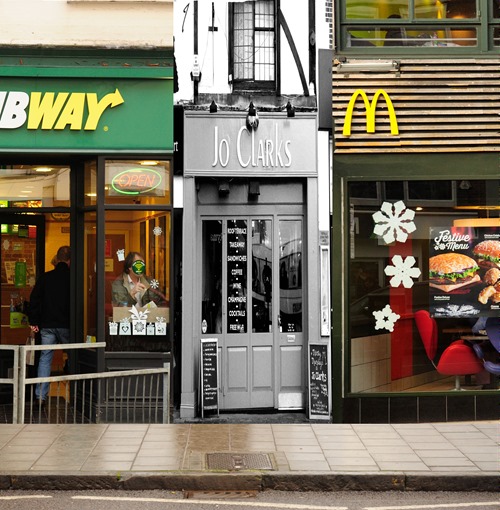
This attempt highlighted a few problems, mainly to do with scaling the images but the idea was there. I need another image for the left hand shop (too much detail to remove) and the central image’s scaling needs to fit so all the shopfronts and name boards are of similar height. I will also experiment with a selection layer on the monochrome image to show the colours running downwards and work on a method of showing the colours running across the pavement to the drain.
19/12/2013
After visiting several locations, experimenting with different views of shop fronts I have come up with four images which I think will provide a reasonable, believable image when edited, cropped and joined up. The most arduous part of this shoot was waiting for parked cars and delivery vans to move and finding suitable locations in the first place. Three of the images are from Guildford High Street and the fourth (Domino’s) is within walking distance of my home in Bordon.
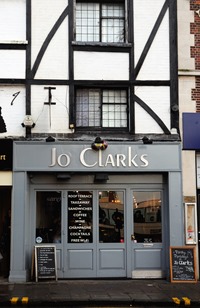 | 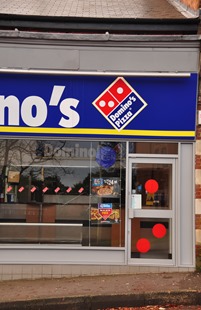 |
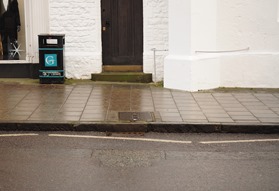 | 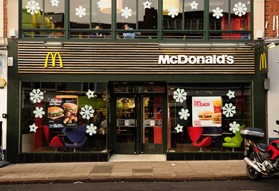 |
10/01/2014
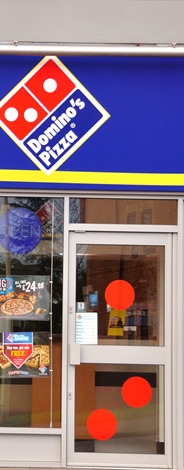 |  |  |
 |
2. This is my first experimental attempt to add the paint to the pavement using Sumo Paint but the “bevel” tool wouldn’t give me a fine enough adjustment and the paint looks more like plastic.

3. I was also unhappy with the monochrome shop front so I used the selection brush in NX2 to selectively remove the colour in streaks. I also made the crop a bit closer.

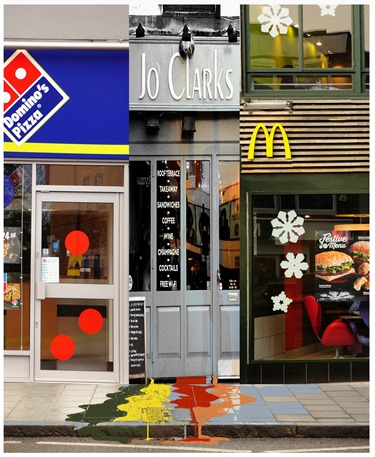
5. My next idea was to use the distort brush to give the image some dynamism. I felt it lacked any interest otherwise. I have tried to retain the sense of the type of business by leaving the window lettering part readable. I also re-thought the McDonalds shop front and decided to re-crop it to exclude the first floor window. I have added the name of the fictional publication and some “dressing to make it look realistic. This is the final image that I will submit to my tutor as a print:
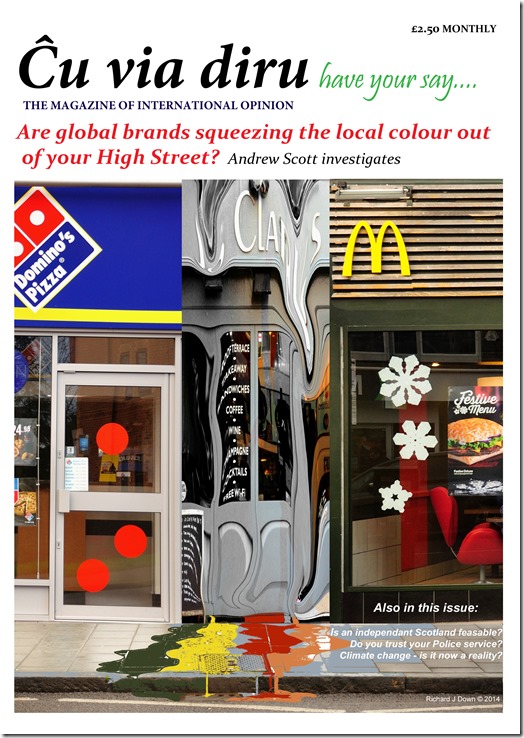
I have produced this image with no thought of deception, rather to use manipulation to construct an image to illustrate a metaphor. I’ve assembled the elements and arranged them in a manner which is obviously the realisation and simplification of an idea, not a physical occurrence.
Reflection on Assignment 4
Demonstration of technical and visual skills: This assignment was challenging in its execution because this is the first really serious attempt I have made at constructing an image of this type. My usual editing software does not have the facility to use layers so I had to learn how to do that. I have shown the image editing skills I learned from this section of the course and have successfully planned and executed this project.
Quality of outcomes: I have used my knowledge and experience to conceive this idea and present it in an original way.
Demonstration of creativity: I think I have been very creative in the way I have used editing software to manipulate this image and interpret this idea.
Context: The proliferation of global brands throughout our environment is something which concerns me especially at the expense of small highly personalised businesses. This image sums up how I feel.
This assignment has been submitted to my tutor as a single print on 13/01/2014.
Wednesday 20 November 2013
Assignment three – Monochrome
The prints are read from the top and left to right:
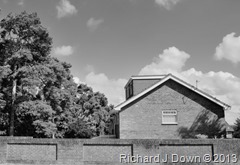 Print 1 (3958) | |
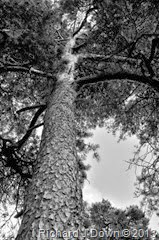 Print 2 (3949) | 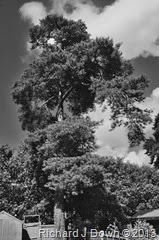 Print3 (3954) |
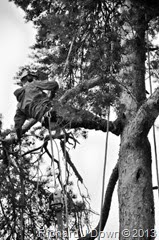 Print 3 (3965) | 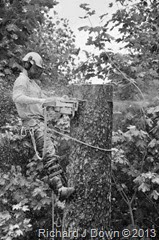 Print 5 (3969) |
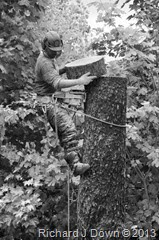 Print 6 (3970) | 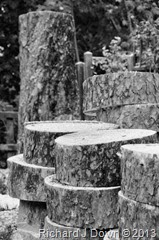 Print 7 (3977) |
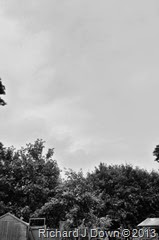 Print 8 (3979) | 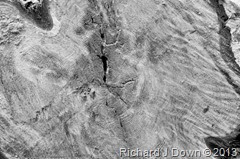 Print 9 (3982) |
- Open the .tiff image from the Silver FX2 Pro2 conversion
- Duplicate the file and save it as a NEF file (this will record all edits and allow new versions to be made) Add the suffix _print_copy to the file name for reference
- Have the two files open in the workspace side by side.
- On the print copy, open the soft proof dialogue an apply these settings for paper profile and intent:
Reflection on Assignment 3
Demonstration of technical and visual skills: I have shown from this assignment that I can apply the skills I learned from the exercises to produce monochrome images from my digital files and shown skill in their conversion and enhancement to produce interesting images.
Quality of outcomes: I have used my knowledge and experience to conceive this idea and present it in an understandable way.
Demonstration of creativity: This is a personal project. I have recorded what has happened to a very old tree. I have lived with it in my garden for 27 years and I wanted to mark its passing.
Context: Earlier in the course I wrote about Ansel Adam’s book “Trees”. I remarked then that I was fortunate to live in an area where I was surrounded by trees. They are a renewable resource but I am aware that they need to be looked after. A living thing that has survived for over 100 years deserves some respect. The woodland of which this tree once formed a part, can be seen in this historic photograph:
Photo of Bordon, 1919 - Francis Frith (my house was built beyond the trees on the left of this picture)
This assignment has been submitted to my tutor as a set of prints on 20/11/13
Tutor feedback on Assignment 3 (24th November 2013)
I was pleased to receive detailed and comprehensive feedback from my tutor. She was positive about the way I had presented it and thought that the images worked well together in black and white. I will re-write the introduction to the project to make more of the idea of this collection of images as a memoriam to a tree. I was unsure just how much to write as I wanted the images to stand on their own. I will re-edit the group in response to tutor feedback. Here is an extract of my tutor’s feedback with the issues that I will be addressing in preparation for assessment:
The last picture is great – it’s like the fingerprint of the tree. I almost see that one as sitting slightly aside form the other more chronological set. It could be the picture on the coffin at the funeral! I really liked how you talked about this as ‘ode to a tree’ and TV and the idea of an obituary for the tree really stayed with me. I hoped you would have made more of this, more in it’s contextualization and written introduction. It could have really pushed some creative buttons! (The way you introduced it at OCATV has really stayed with me and for me is the strength of the idea – something you should make more of in your write up / introduction for assessment.) That aside I still think this works as a successful and coherent set of images around an interesting subject matter. I particularly like the first image of the house and the looming tree – somehow the context is very absurd and sets the tone well for the rest of the pictures, which could as easily be set in a forest.
You did well on the edit. There is just enough and not too much information to take us through the journey. Perhaps, arguably you didn’t need both 4 and 5, but that is minor.
Perhaps you could revisit the same picture as the opening image now without the tree and create a bookend effect instead of the empty sky? Just an idea. The empty sky is a nice representation of the clearing though and you may not want to be so obvious – however something within me would like to see and compare the house before and after!
As suggested I will try to write up my book reviews as I go along and make them more detailed.
Editing in preparation for Assessment: I have added more to the introduction as suggested by my tutor and introduced more in the context of my family associations with this area. I have also edited the submission and taken new photographs in response to Sharon’s feedback.
I wanted to mark the passing of this tree with a set of photographs. It seems almost callous to destroy such a large living thing without any record or memorial. It has stood for about 126 years and survived the 1987 storm when hundreds of trees in the immediate area were devastated. A rare feat of survival for a 100 year old. (I researched Dendrochronology and discovered that counting tree rings is not a particularly accurate way of aging a tree but for these purposes I think it is accurate enough)
Sharon’s remark about the “fingerprint of the tree” and “the photograph on the coffin” got me thinking. The tree surgeon had cut me a thin slice across the trunk very close to the bottom so I counted the tree rings and thought about the significant dates in my family’s history which were relevant to the tree and where it was (Bordon in Hampshire).
Between 1887 (my estimate of when the tree started growing) and 2013 I could link these events to the tree’s timeline:
1903 – After the Boer War, my Grandfather was posted to nearby Longmoor Ranges with the Royal Engineers where they were building a railway. My Aunt was also born in this year at Whitehill, within a mile of the tree and where my son and his now family live.
1919 – Within a hundred yards, this photograph was taken: Photo of Bordon, 1919 - Francis Frith
1936 - (or thereabouts) My father, newly enlisted into the Grenadier Guards, attended a training Camp at Oxney Farm which is still an Army training area and just a 1.5 mile walk to the northwest.
1986 – The year I moved to Bordon, bought this house and learned about my family connections to the area.
I have made several changes to the print submissions in response to feedback, removing print 5 and substituting this new print of the house without the tree (taken in December) for Print 7, below.
Here is the final layout for Assessment submission:
